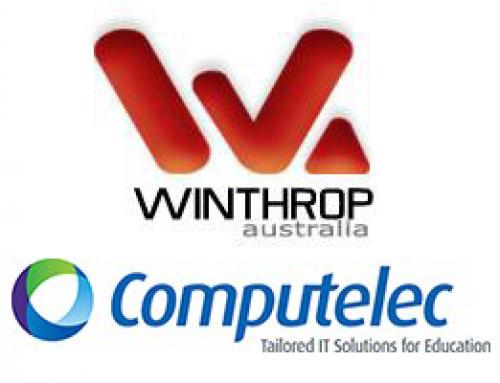Adopting the Cloud – The People side of things
by Dallas Hindle, Solution Architect at Computelec
I'm frequently brought in to Schools to consult and work as a cloud architect and I've recently run into problems getting school staff to engage with cloud adoption projects.
Thinking back, this has actually happened for quite a number of years and while it’s not as prevalent as it used to be, I've found myself trying to sell the cloud not to our customers, but to the engineers, consultants and internal IT staff who seem to think it would do them out of a job or reduce their ownership and power in their own environments.
To be honest, I don’t think cloud would do any of these staff out of work, in fact I saw it building their importance to the business and the need for their skills. Sure, some rack and stack or hardware specialised staff members might hurt initially but they are the minority and would already be working in a larger environment or datacenter, and with their experience would have a far deeper understanding of the cloud than most.
I thought it would be worth sharing the skills I discussed with these schools as they are key to the adoption and successful implementation of private, hybrid or public cloud infrastructures. Having the right people at the right time is a key goal for most managers and businesses, however I don’t believe that cloud skill sets are unto their own. Building existing staff and their skills will give you a stronger employee and longer term engagement. I've also found staff that I've invested time and effort in have been more loyal and steadfast to the business and to each other.
The cloud is an interesting beast and everything I've seen comes down to a few key areas that are critical to build or maintain your skills in.
Design and Architecture
Any cloud architecture project must be designed and architected correctly. We are seeing more and more schools ask how to manage or get out of their sprawling, uncontrolled and out-of-hand cloud adoptions. When 4 different departments go to different cloud providers and swipe their credit card and start to do stuff, it’s a recipe for disaster. I.C.T. needs to do some pro-active education for the business by getting in front of the business to talk about cloud services; what they mean and what they can and can’t do.
We strongly recommend that I.C.T. departments get involved with and build engagement with the stakeholders who might need or want a cloud service or solution. Don’t let them go out and swipe their credit card and buy whatever they come across first, make them want to come and talk with you and your team. This allows you to direct and control cloud adoption. This allows you to be closely involved in the design and architecture of a cloud solution in your organisation and not be told 6 months down the track that your admin department has been using a cloud storage provider to host files and a web server and it’s offline for some reason.
Backup / Recovery / High Availability / Resiliency / Disaster Recovery / Business Continuity Planning
Ok, this area is a big bucket and I haven’t segmented because generally no business can run successfully if they don’t have their services available. Staff need to be completely across their cloud provider’s offering around meeting their needs for backup, HA, DR and BCP. When you boil down a cloud environment it is still Compute, RAM and Storage sitting in a Datacenter connected to the internet somewhere in the world.
They can still have power outages, link failures, hardware failure, flood, fire and other natural disasters strike. Keep across what is available from the provider and ask questions like” ‘How do you backup up our data?’, ‘Where do you store it?’, ‘How accessible is it?’, ‘How do we get it during a Disaster?’, ‘What are your SLA’s for recovery?’, ‘What is the RPO and RTO of this service?’ etc.
On the ‘Conversion Settings’ tab you can choose to convert for Hyper-V or VMware ESX.
Enter the required connection settings for your host or vCentre server, and a destination virtual machine name. Here you can specify the memory and CPU’s to be allocated to the virtual copy. On the ‘Disk Configuration’ tab you can choose the location (datastore) of each virtual disk, and whether it is thin or thick provisioned. You cannot resize the disk.
You will also need to specify the location of VMware tools for your version of VMware, which means downloading it to the BackupExec server, and specifying the location in the job properties. BackupExec will automatically install the tools during the B2V process. When finished, your backup job will look something like this:
Automation
Although I've seen some cloud providers offering solutions with almost zero automation, generally most providers offer automation and have it built into the very core of their offering. Cloud is all about Self Service, Self-Provisioning and the trust that when you ask for another virtual machine, extra CPU’s, more RAM or try to expand a HDD it will just work. Encourage your staff to build their awareness and understanding of these tools and systems and encourage them to build the review and automation of repetitive and mundane tasks into their daily operations. Why manually do something when you can automate it? When dealing with the cloud, automation is key! Get across it early and as completely as possible.
Different cloud offerings have different capabilities. For instance, AWS has some amazing automation capabilities but if asked if this a selling point for a school, I'd probably say it was a very minor one because it wouldn't be used in the way it was designed and built for. Web Scale automation and scaling doesn't translate into school I.C.T. environment well, automation however is a much wider topic.
Security / User Access Control / Compliance / Auditing
Security and compliance questions are up there with the most common and easily the most complex questions that I've had in regards to the cloud. Everything from ‘Are we allowed to do (x)?’ to ‘What happens if data is lost (or in many cases, compromised)?’. The cloud is based off systems that are built on platforms designed (and sometimes not designed) for multi-tenancy. This means that as a customer of a cloud service you are sharing your CPU, RAM, Storage, Network and virtualisation platform with hundreds and possibly thousands of other customers of the cloud providers. If something goes wrong and there is a breach of security or even human error, your data or someone else’s data could end up being accessible by others. Knowing how to respond to these events is a key skill.
Cross functional / Inter silo / Cross faculty
Cloud engagements require interaction and communication between the IT silos’ of responsibility to a level rarely seen before. Normally a server administrator couldn't add a new disk, CPU or network without engaging and working with the Storage, Virtualisation or Network areas of the IT department. This can cause challenges in almost any organisation, so having a person or group who specialises in engaging the disparate areas and working both with the established or new processes and within the change management process is critical to success.
There are so many areas your staff could up-skill themselves in or increase their responsibilities in and this should be seen and promoted as a good thing and an advancement. Most schools and colleges that I work with have a strong desire for their I.C.T. staff to be more engaged with their educators and more focused on delivering a more seamless educational experience in the classroom.
When what is lost is weighed against the gains of moving to the cloud, it should be something that can advance and improve you or your staff. This is something that can be managed both proactively and positively and can improve both your I.C.T. Department and everyone else's experiences with I.C.T.
I hope this helps you and shows that there is a huge amount of complexity in adopting the cloud and how managing your staff, their experience, their expectations and the desired outcomes can really influence how smoothly it all goes.





